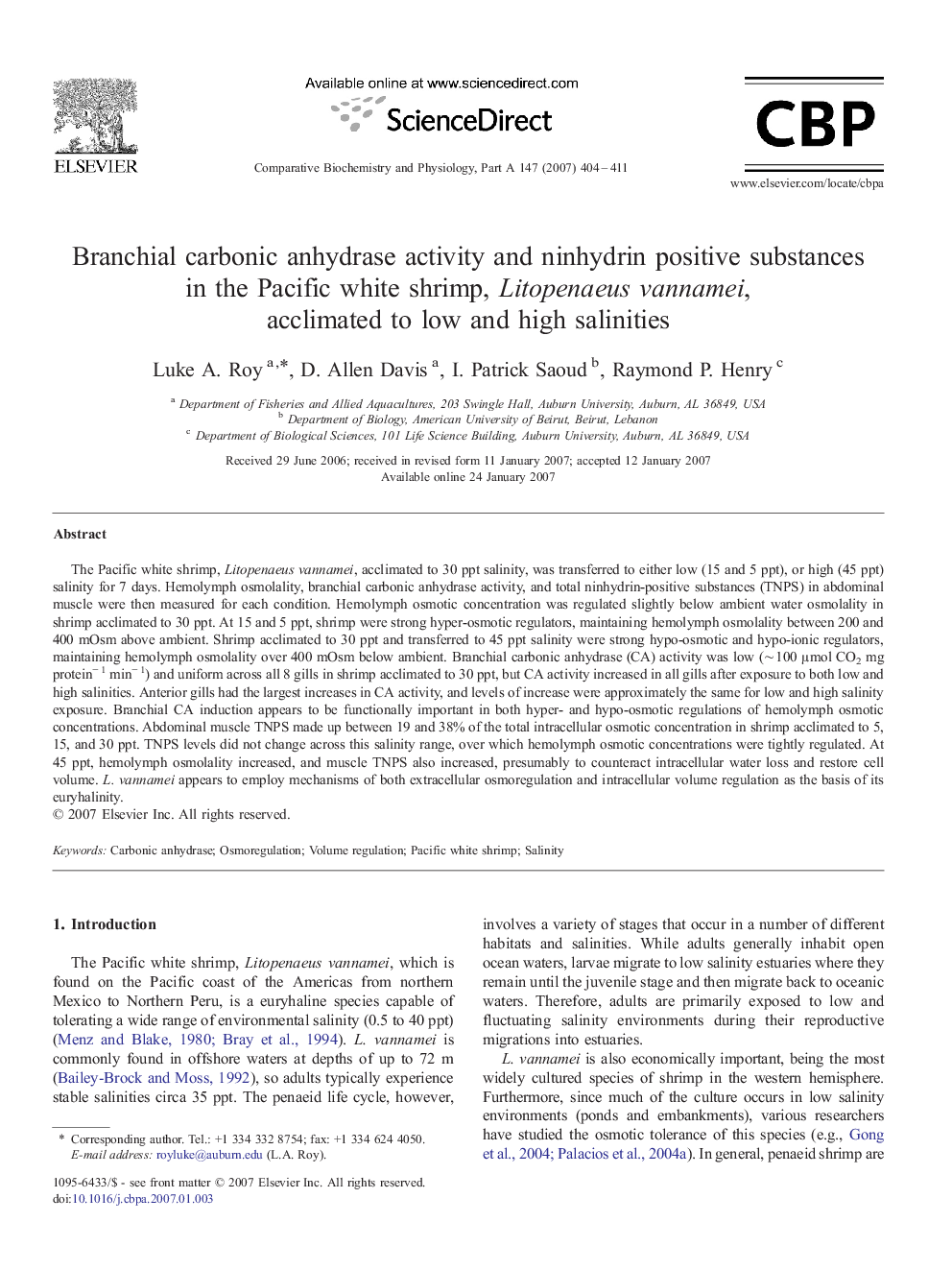| کد مقاله | کد نشریه | سال انتشار | مقاله انگلیسی | نسخه تمام متن |
|---|---|---|---|---|
| 1974262 | 1060346 | 2007 | 8 صفحه PDF | دانلود رایگان |

The Pacific white shrimp, Litopenaeus vannamei, acclimated to 30 ppt salinity, was transferred to either low (15 and 5 ppt), or high (45 ppt) salinity for 7 days. Hemolymph osmolality, branchial carbonic anhydrase activity, and total ninhydrin-positive substances (TNPS) in abdominal muscle were then measured for each condition. Hemolymph osmotic concentration was regulated slightly below ambient water osmolality in shrimp acclimated to 30 ppt. At 15 and 5 ppt, shrimp were strong hyper-osmotic regulators, maintaining hemolymph osmolality between 200 and 400 mOsm above ambient. Shrimp acclimated to 30 ppt and transferred to 45 ppt salinity were strong hypo-osmotic and hypo-ionic regulators, maintaining hemolymph osmolality over 400 mOsm below ambient. Branchial carbonic anhydrase (CA) activity was low (∼ 100 μmol CO2 mg protein− 1 min− 1) and uniform across all 8 gills in shrimp acclimated to 30 ppt, but CA activity increased in all gills after exposure to both low and high salinities. Anterior gills had the largest increases in CA activity, and levels of increase were approximately the same for low and high salinity exposure. Branchial CA induction appears to be functionally important in both hyper- and hypo-osmotic regulations of hemolymph osmotic concentrations. Abdominal muscle TNPS made up between 19 and 38% of the total intracellular osmotic concentration in shrimp acclimated to 5, 15, and 30 ppt. TNPS levels did not change across this salinity range, over which hemolymph osmotic concentrations were tightly regulated. At 45 ppt, hemolymph osmolality increased, and muscle TNPS also increased, presumably to counteract intracellular water loss and restore cell volume. L. vannamei appears to employ mechanisms of both extracellular osmoregulation and intracellular volume regulation as the basis of its euryhalinity.
Journal: Comparative Biochemistry and Physiology Part A: Molecular & Integrative Physiology - Volume 147, Issue 2, June 2007, Pages 404–411